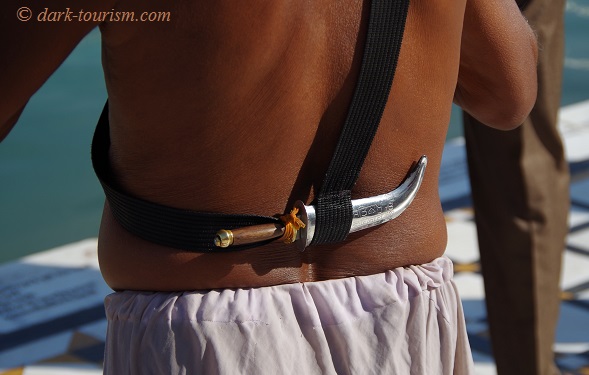36 years ago, in early June 1984, the Indian military launched an attack on the Golden Temple (aka Harmandir Sahib), the holy of holies of the Sikhs, in order to “flush out” the extremist religious leader Jarnail Singh Bhindranwale and his followers who, on invitation by a Sikh political party leader, had taken refuge in the temple complex and fortified it. The group had been critical of the dominant social and economic conditions at the time and felt Sikhs were being discriminated against. This had already led to clashes in the 1970s and early 80s. Apparently there were also links to Hindu India’s arch-enemy Pakistan, which is not far from the city of Amritsar, Punjab, where the Golden Temple is located (see also Wagah).
The order to attack the temple was given by then prime minister of India Indira Gandhi, after negotiation attempts had failed. The army encircled and sealed off the temple and demanded the release of pilgrims who were trapped within the complex and urged the extremists to surrender. When none of the demands were met, the military launched their attack on 3 June, using artillery, tanks and rocket-propelled grenades. The battle lasted days, and the casualties were high: well over 500 were killed (mostly inside the temple, including many civilian pilgrims), 83 of them on the military’s side, and countless more injured. Bhindranwale and the other top leaders of his organization were also amongst the dead.
Militarily, the operation may have been a “success”, but it backfired. Sikhs worldwide considered it an attack on their religion. And Indira Gandhi eventually paid with her own life when later that same year she was assassinated by two of her bodyguards, who were Sikhs, on 31 October. This backfired too, now in the other direction, as the assassination triggered violent anti-Sikh riots which cost thousands more lives.
I visited the Golden Temple in late 2016. I had come to Amritsar primarily to see the Jallianwala Bagh that is located next to the Golden Temple, but of course this grand complex had to be seen too. In fact I spent some two and a half hours there and it was a highlight of my whole India trip. There isn’t much to commemorate the tragic days of 1984, although there are said to be bullet holes still visible on some walls, but I didn’t spot any, nor was there any open reference to Operation Blue Star and its aftermath. But the temple complex as such was impressive. For the first part of our visit we had a guide who took us through the kitchen complex and the halls where pilgrims eat their free meal provided by an army of volunteers. Here are a few more photos:





A central part of the complex is also the tank, a water basin with “holy water” in which pilgrims go for a cleansing dip. There is strict gender segregation, only the men are allowed in the water in the open, women have to use a special bath house that shields them from outside view (by men).

In addition to the beards and turbans, it is also part of orthodox Sikhism than all men are allowed to carry a weapon, usually these days an ornamental dagger.

Even men carrying spears are commonly seen at the Golden Temple.





